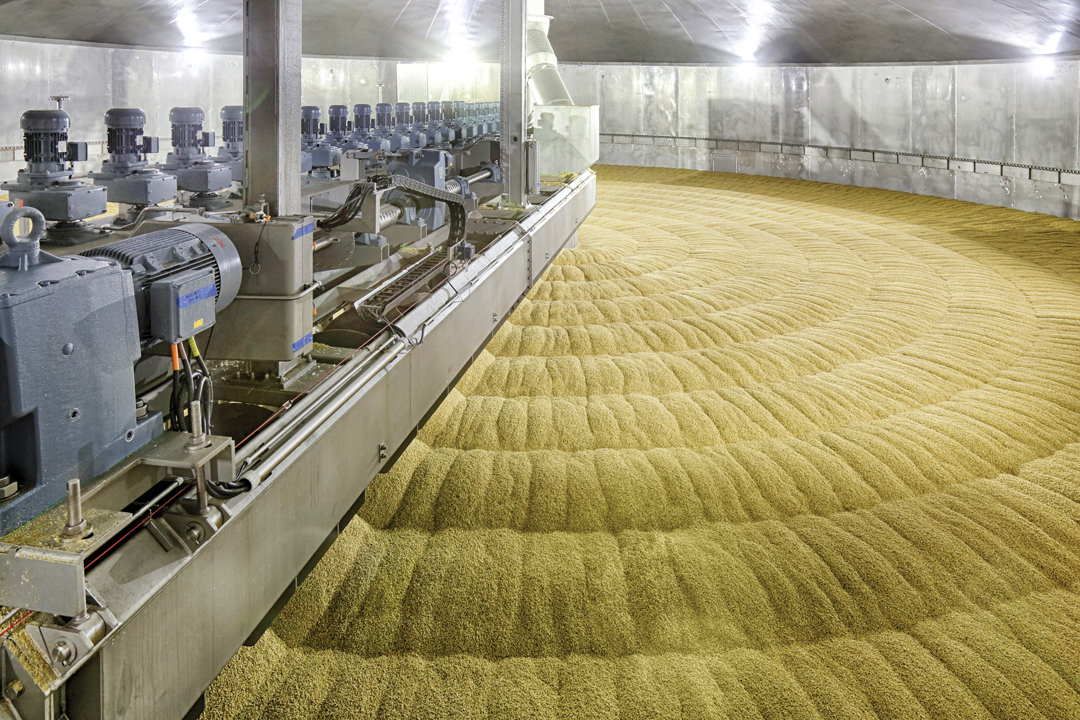STUDY TO SIZE UP BARLEY FOOTPRINT
BY PETER WATTS • PHOTO: SHUTTERSTOCK
In recent years, the global brewing industry has increasingly focused on the environmental sustainability of beer. Many of the world’s largest breweries have set aggressive emissions reductions targets. This has been driven by a combination of jurisdictional regulations, corporate social responsibility goals and consumer demand. Much of the initial focus has been on manufacturing, packaging and transportation, but their initiatives increasingly encompass the entire supply chain including emissions associated with raw materials like barley malt.
As a key brewing ingredient, barley malt is a contributor to the environmental footprint of beer production, which includes greenhouse gas (GHG) emissions and water use. Studies have estimated malt contributes some 22 per cent of total GHG emissions associated with beer production, second only to the 40 per cent of total GHG emissions embodied in beer packaging materials. According to the Maltsters’ Association of Great Britain, barley itself contributes 60 per cent of the total GHG emissions associated with finished malt in the U.K.
Canada is one of the world’s largest barley producers with close to 9 million metric tonnes of production in 2023. Of this, about 25 per cent ends up as bottled beer either at home or abroad. The Canadian malting industry processes approximately 1.2 million tonnes of barley into malt annually for the domestic and global brewing and distilling sectors. Each year, Canada accounts for approximately 10 per cent of global malting barley supply, and five per cent of its total processed malt. The malting process itself includes three key steps: steeping, germination and kilning. The processes require significant energy and a large volume of water.
To ensure Canada is well positioned to meet the future demands of our global brewing customers, the CMBTC has initiated a study to better understand the environmental footprint of Canadian barley and malt. It will also look at ways to reduce energy use in processing. This study will establish baselines energy and water use for production practices in the growth of barley and manufacture of malt. It will also identify opportunities to improve efficiencies in the malt manufacturing process to reduce energy and water use and associated GHG emissions.
The three year study will provide Canada’s malting barley value chain with data to quantify GHG emissions associated with barley and malt production. Due to Western Canada’s climate and farm production practices that include no-till, the environmental footprint of barley production in Canada is already low compared to many other growing regions of the world. Now we will be able to supply this data to our malting and brewing industry customers, as well as those in industries such as livestock. The study will also explore ways to reduce energy use in malt processing. This will be done with the use of micro- and pilot-scale malting and brewing systems at Canadian research facilities such as the CMBTC and the Grain Research Laboratory of the Canadian Grain Commission. Commercial partners in the project that include Boortmalt and Malteurop will ultimately have the opportunity to test the methods developed in the study at a production scale.
To enable our malting and brewing company end-users to track and meet aggressive environmental targets, Canada’s barley value chain must be able to quantify the environmental footprint associated with barley and processed malt production. This will also help Canada to maintain its premium value proposition and to be a supplier of choice to end-use customers around the world.
Peter Watts is the CMBTC managing director.







Comments